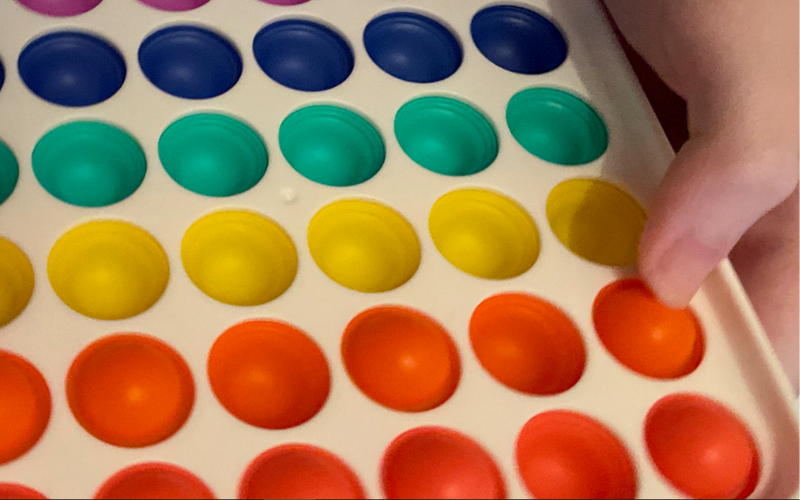3 Ways to Use Pop It Sensory Toys to Help an Autistic Child

Miriam Gwynne
Full time mum and carer for two truly wonderful autistic twins. I love reading, writing, walking, swimming and encouraging others. Don’t struggle alon...

My autistic twins love fidget toys: you know those spinners, stress balls, fidget cubes and little marble mesh things that give your hands something to do while you watch something or read or just need some time out. My daughter’s favourite has to be the pop it ones that you see everywhere in all different sizes and colours where you press the holes in like bubble wrap then turn it over to do the same again. The repetitive motion, the soothing soft sound and the satisfaction of doing a full line or the full toy really help her relax and unwind after a long day at school.
But other than just sitting popping them on her own is there anything else you can use them for to help an autistic child? Here are a few ideas I do with my daughter that have really helped her.
Turn-taking games
There are larger pop it toys specifically designed for such games but if you don’t want the extra expense of buying one you can use any ones you have already and a spare dice. The idea is simple: you each take turns rolling the dice and popping that number of ‘bubbles’ on the toy and the first to get their toy fully popped wins. This game is especially good for helping children learn turn-taking, developing the concept of fairness (if one pop it is smaller then is that really fair?), and learning to accept losing. For younger children, it helps simple counting and addition and for older children, it can help problem-solving and simple fractions (‘wow, you have half of yours popped already. Well done.’)
This use has been especially useful when waiting has been hard as it can finish at any point. One day recently when my daughter’s anxiety was high about waiting for a programme on TV to start we used this pop it game to take the focus off the time and keep her calm.
Seeing positives
My daughter really struggles with anxiety and misunderstanding social communication. She can have a tendency to dwell on negativity and hyper-focus on things that might go wrong more than anything positive. I often find her alone on her bed sitting with her fingers popping one of her favourite pop it toys repeating something negative over and over. So I sit with her and she’ll tell me about a teacher that upset her that day, a child who looked at her the wrong way, a sum she got wrong in maths and so on. I would get her to pop one bubble for every different scenario of her day until she felt she’d got to bedtime. Then I’d start at the other side of the same pop it, or at the bottom and I’d get her to think of positive things from the same day. Did anyone say good morning to her? Had the teacher said well done that day? Had a child playing with her? One by one we’d press another bubble for each positive until she came to the end of her day again.
Almost every time when we counted the bad things and the good things she actually found, very visibly, that in fact her day hadn’t been anything like as bad as she had realised. The visual aspect helped her see that while bad things do happen so do good things and now she’ll often say when I pick her up from school that in her head she popped some bad bubbles but that she also remembers popping good ones too.
As a calming tool
Emotions can be overwhelming and confusing for many autistic children (and adults) and finding a release from sensory overload is essential. While ear defenders, blackout tents, punch bags and so on have their place sometimes these just can’t be so easily accessed and it’s good to have a portable small item that has the ability to calm and soothe quickly. When my daughter found the noise in a shop too much one day I got her safely outside and we used her favourite pop it to help her breathe slower and calm down by simply redirecting her stress into something more productive and safe. ‘Let’s sit and count 20 pops shall we?’ Then when she was starting to calm she counted 20 more until her body and mind felt calmer and safer and we were able to try again.
Pop it toys are cheap, collectable, and colourful and are as individual as every child but to my autistic daughter they are much more than silicon or plastic pads that feel and sound like bubble wrap but a real tool for helping her self calm, interact with others and boost her mental health. They are fast becoming one of her most treasured fidget toys because of their versatility and their addictive soothing properties.
They may be trending on TikTok, YouTube and in school playgrounds everywhere but for my autistic child, they are not just the latest trend in fidgets but her favourite tool that helps her in a confusing and overwhelming world.
I wish they’d been around when I was a kid too!


